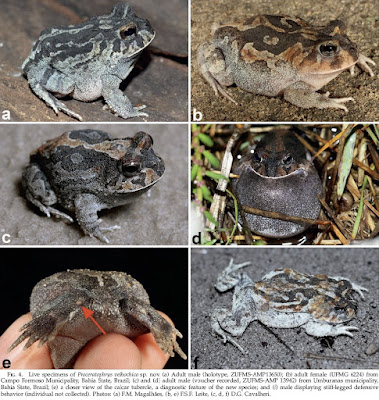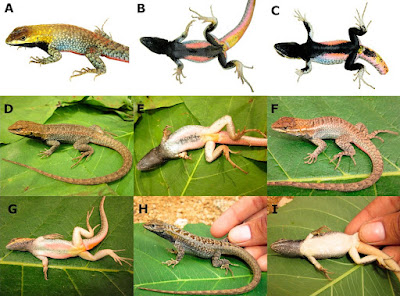The genus Proceratophrys currently comprises 40 species, of which five are distributed within the Caatinga domain and associated phytophysiognomies along northeastern Brazil. During field surveys at high altitudinal sites in Boqueirão da Onça region, northern Bahia state, we collected individuals of Proceratophrys that could not be assigned to any species currently known to occur within the Caatinga, which we describe herein. Leer más.





Pesticides are useful for killing weeds (herbicides), fungi (fungicides), insect pests in agriculture and fleas in pets (insecticides). They are also used to reduce the numbers of biting insects in urban and rural environments. We have recently studied the indirect health effects on frogs of a biopesticide that has been in use for several decades, mainly to reduce the number of bothersome mosquitoes. Leer más.

Plastomeninae, a clade of fossil turtles that has recently undergone significant revision, are currently known from the Late Cretaceous to the Eocene, with some genera known to survive the end-Cretaceous mass extinction (e.g., Hutchemys). Only one taxon survives past the Paleocene into the Eocene (Plastomenus thomasii). Leer más.
We describe two new sympatric species of Stenocercus from the seasonally dry forest of the inter-Andean valley of the Mantaro River (Huancavelica department) in the Central Andes of central-southern Peru, at elevations of 1,693 to 2,920 m asl. Leer más.









